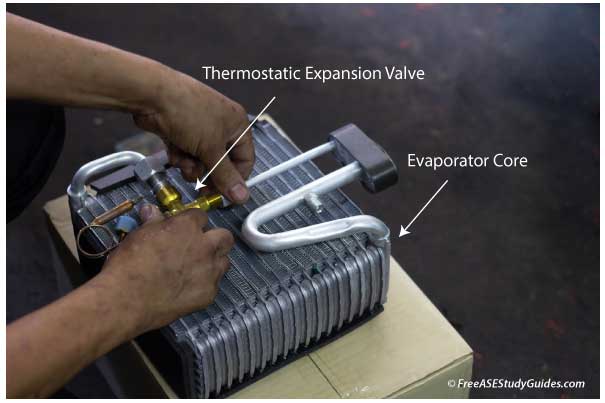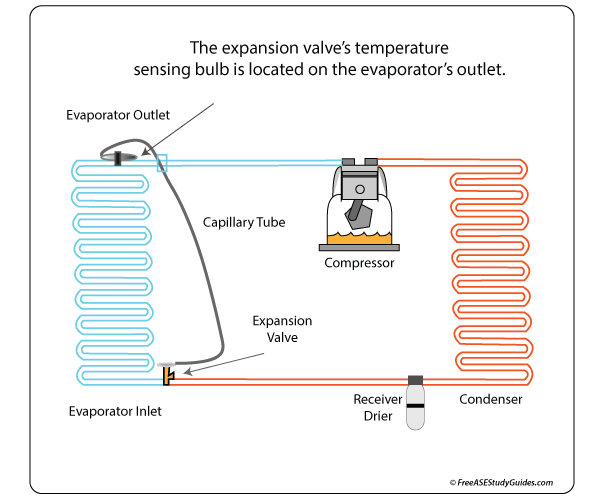Thermostatic Expansion Valve

A (TXV) thermostatic expansion valve is a metering device used in many automotive air conditioning systems. The expansion valve and the fixed orifice tube are the most common metering devices used in today's automotive air conditioning systems. The major difference between the two devices is the TXV offers a variable and changing rate that meters refrigerant according to demands. The FOT has a fixed metering rate and changes only with refrigerant volume and system pressures created by the cycling compressor.

The expansion valve is located at the inlet port of the evaporator. It consists of several parts, including a spring to keep the valve closed, restricting refrigerant flow through the system. At the top of the expansion valve is a dome filled with refrigerant. The capillary tube and bulb are also filled with this refrigerant and placed against the outlet port of the evaporator. This entire chamber is sealed off from the rest of the system by a flexible diaphragm.
The gas inside the sensing bulb expands as the temperature increases, causing the diaphragm to move a pintle, allowing refrigerant to enter the evaporator. As the evaporator cools, the gas inside the bulb contracts, forcing the pintle back to the closed position blocking refrigerant from entering the evaporator core. Expanding and contracting gas moves the diaphragm and pintle, regulating the refrigerant by temperature as it enters the evaporator.